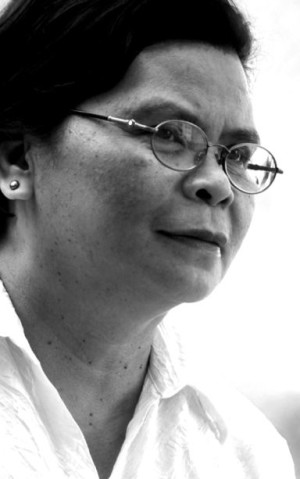
DELACERNA
The fiesta of Santo Niño and the Sinulog Festival are fitting occasions to open the new year for it makes us reflect on our life, faith and culture.
The sounds and the sights of the Sinulog are overwhelming.
f course, the fiesta of Santo Niño is not complete without the sinug/sinulog. But our view of sinulog is only that as a dance, we forget it is a prayer.
Dancing the sinug/sinulog is also praying.
Dancers, teachers and scholars on dance and spirituality have much to share in helping us reflect on dance as prayer showing how moving the body stirs the soul.
Many indigenous people believe that whenever in our lives we stop dancing, singing, and being enchanted with stories or begin experiencing difficulty with silence is when we begin experiencing soul loss or loss of spirit.
Dancing is a powerful way to retrieve those parts of the soul which have been lost or unused.
According to De Sola, a teacher and writer on spiritual dance, the body is the primary text of learning, and, when guided by the spirit, it mirrors the yearning of God in our hearts.
We learn more about who we are through the dance. For we live, move and exist in God. He further adds that “all of life involves movement, and movement becomes dance when there is an inner life, a living spirit directing it.
True dance draws its strength from the living flow of the universe.
With this power, dance can lead us to the heart of reality; it can turn energy loose within us, and this would be a fearsome thing of one were not rooted in good.”
Movement that finds its home in the heart of the faithful pilgrim becomes dance when it is joined to the Creator’s act of giving life.
In the stillness of the heart, the movement grows to a prayer and then to a dance.
For some dancers, dance is the fastest, most direct route to the truth. We dance to reclaim our brilliant ability to disappear in something bigger, something safe, a space without a critic a judge or an analyst.
We dance to fall in love with the spirit in all things, transform it into moves that nobody else can make because they didn’t live it.
The beat is a lover that never disappoints and, like all lovers, it demands 100% surrender.
It has the power to seduce moves that we couldn’t dream.
Prayer is moving.
Prayer is offering our bones back to the dance. Prayer is letting go of everything that impedes our inner silence.
God is dance and the dance is the way to freedom, and freedom is our holy work.
We dance to survive, and the beat offers a yellow brick wade to make it through the chaos that is the tempo of our times.
We dance to shed skins, tear off masks, crack molds, and experience the breakdown — the shattering of borders between body, heart and mind, between genders and generations, between nations and nomads.
Dancing the sinulog is basically involving only three movements, namely the wara-wara or waving the hands, kiay-kiay or moving the hips, and untol-untol or moving with the feet, moving with one step forward and two steps backward.
The hands are not bare for the dancer always holds a candle but in case there are no candles, a handkerchief is a good substitute.
One old practice of dancing the sinulog was to dance holding a baby which I saw back in 1984 in Matutinaw, Badian.
The novena of the Santo Niño is strengthened by the gozo “Batobalani sa Gugma,” whose music lifts our soul and the lyrics give an account of Cebu’s history.
The additional waving of the hand while singing the gozo reflects the flow of the movement.
At the end of the novena, the movement accelerates with the beat of the sinulog which invites people to move.
The use of the drum and bugle corps helps in the public performance of the sinulog but with the use of indigenous materials as instrument can make it more prayerful rather than a parade phenomenon.
The Sinulog Grand parade and final presentations especially the winning contingents try to show aspects of their culture in relation to the devotion of the Santo Niño.
Some succeed but many others still need some brainstorming.
The prayer dimension should dominate in the presentations through the body movements.
Judging the Sinulog presentations should consider the regional context of the Sinulog which is not present because most of the judges are from Manila.
Perhaps there should be a workshop or reorientation for choreographers on how to fuse the indigenous and the contemporary.
Disclaimer: The comments uploaded on this site do not necessarily represent or reflect the views of management and owner of Cebudailynews. We reserve the right to exclude comments that we deem to be inconsistent with our editorial standards.
